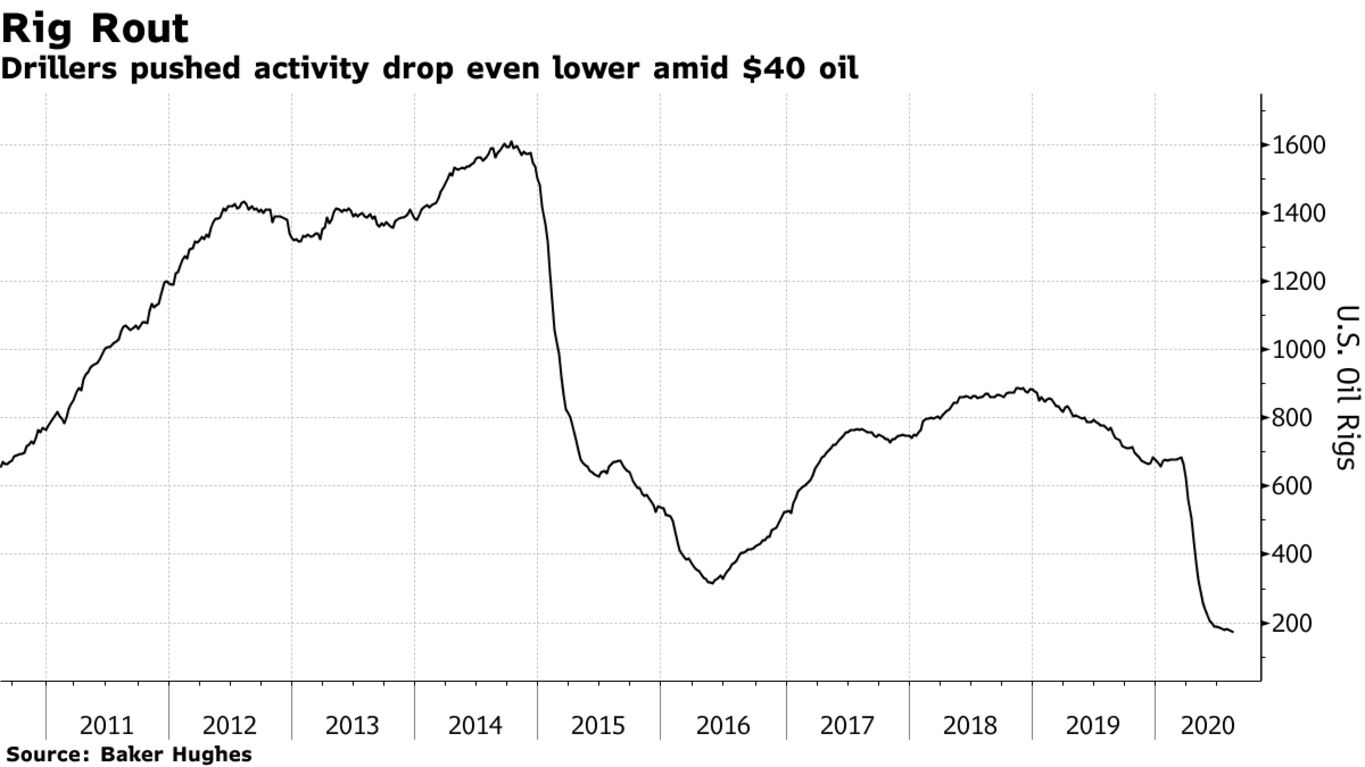Shale explorers parked more drilling rigs in the U.S. this week as stagnant oil prices push the industry to extend a historic retrenchment. The number of active oil rigs in U.S. fields fell by 4 to 172, according to Baker Hughes Co. data released Friday. That’s the lowest level of activity since 2005, before the shale boom kicked off.
The worst may still lie ahead, with the number of drilling permits last month dropping to the lowest since September 2010, according to industry consultant Rystad Energy. U.S. oil production will likely end the year about 20% lower than at the start, according to IHS Markit.

West Texas Intermediate oil, the U.S. benchmark, has hovered around $40 a barrel for most of the past month. “Unless WTI oil prices move towards $50 per barrel in the next few weeks, a rig activity rebound is unlikely before the first half of 2021,” Artem Abramov, an analyst at Rystad, said in a note this week.
The rig count is a closely watched metric because it’s long been considered indicative of future crude production. The relationship is imperfect, however, because of the time lag between drilling a well and commencing production, as well as other factors such as the turning off of existing wells in response to price movements.
